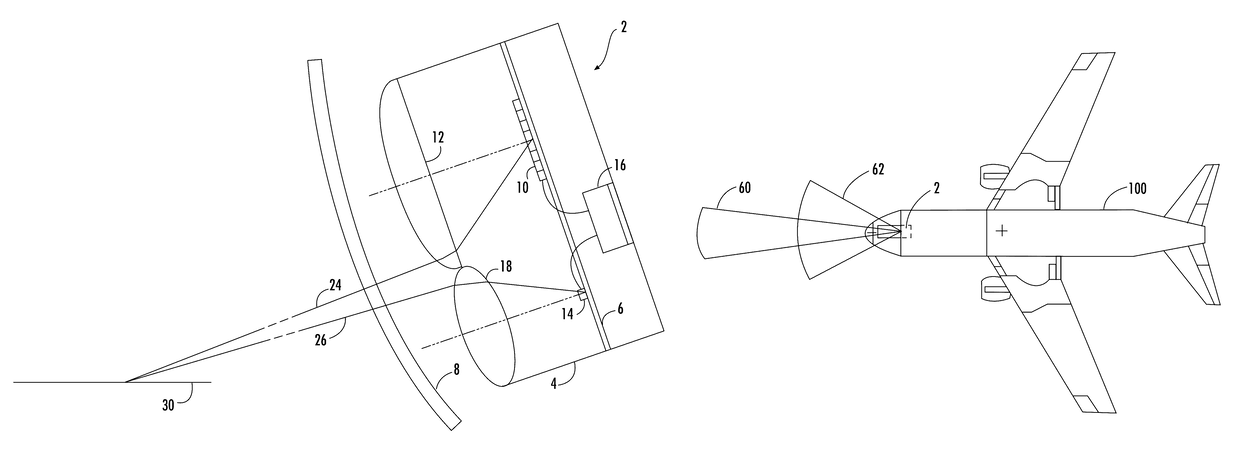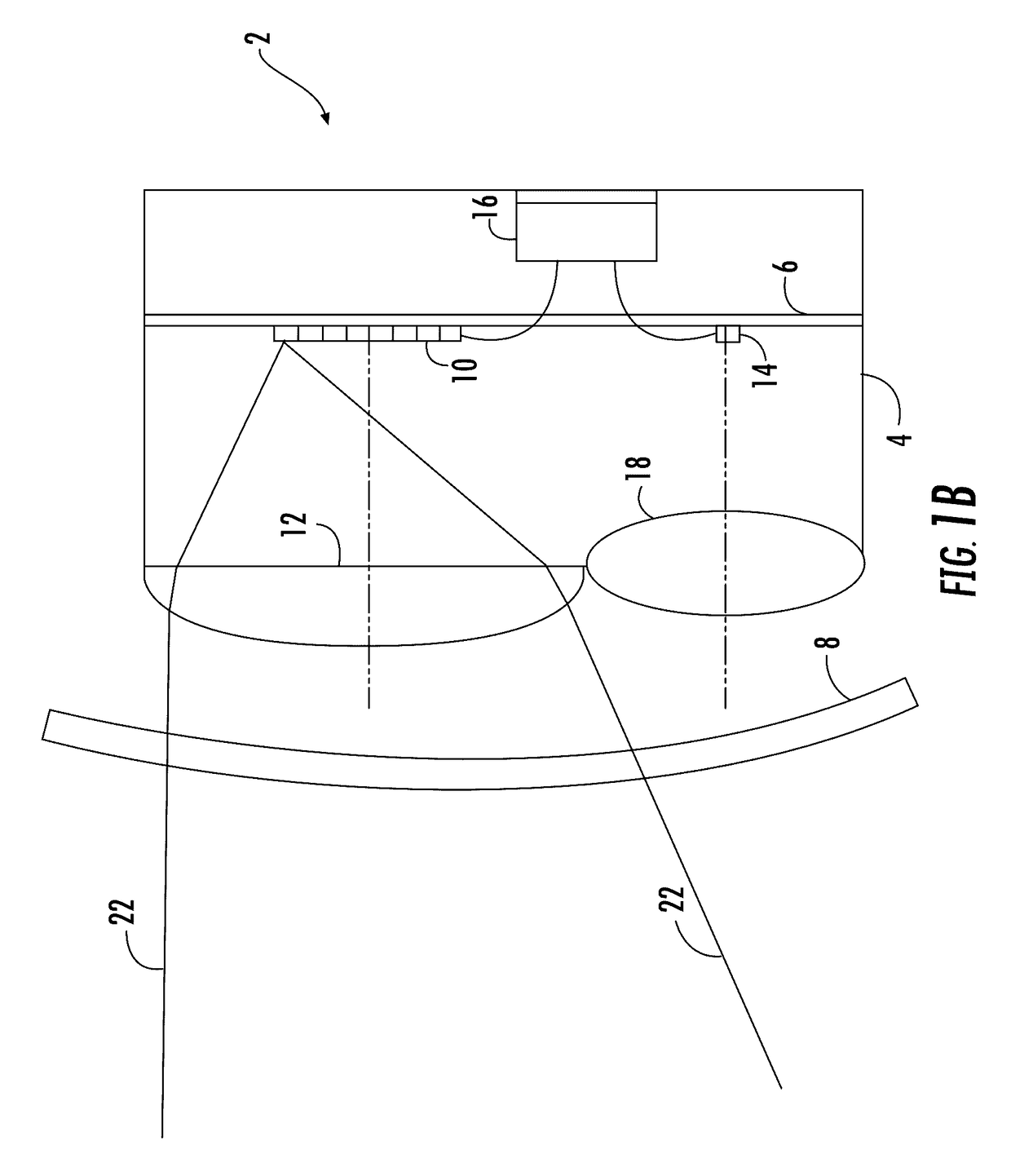Dynamic exterior aircraft light unit and method of operating a dynamic exterior aircraft light unit
a technology of aircraft light and dynamic structure, which is applied in the direction of lighting and heating equipment, using reradiation, instruments, etc., can solve the problems of reducing the awareness of the remainder of the environment by the pilot, the inability of the pilot to accurately and favourably operate the lights, and the inherent risk of the pilot disregarding the remainder of the helicopter environment. , to achieve the effect of accurate light detection and reducing the sensitivity requirements of the photo detector
- Summary
- Abstract
- Description
- Claims
- Application Information
AI Technical Summary
Benefits of technology
Problems solved by technology
Method used
Image
Examples
Embodiment Construction
[0032]FIG. 1a shows an exemplary embodiment of an air plane landing light 2 in accordance with the invention. The air plane landing light 2 is a particular embodiment of a dynamic exterior aircraft light unit in accordance with exemplary embodiments of the invention. Accordingly, it is also referred to as an exterior aircraft light unit 2.
[0033]The exterior aircraft light unit 2 is shown in a cross-sectional, schematic view in the exemplary embodiment of FIG. 1a. The exterior aircraft light unit 2 comprises a housing 4 and a mounting plate 6, to which most of the other elements of the exterior aircraft light unit 2 are mounted. The mounting plate 6 is disposed within the interior of the housing 4. The exterior aircraft light unit 2 further comprises a lens cover 8, which forms the outermost portion of the exterior aircraft light unit 2 and through which the exterior aircraft light unit 2 emits light.
[0034]The exterior aircraft light unit 2 comprises a plurality of LEDs 10. In partic...
PUM
 Login to View More
Login to View More Abstract
Description
Claims
Application Information
 Login to View More
Login to View More - R&D
- Intellectual Property
- Life Sciences
- Materials
- Tech Scout
- Unparalleled Data Quality
- Higher Quality Content
- 60% Fewer Hallucinations
Browse by: Latest US Patents, China's latest patents, Technical Efficacy Thesaurus, Application Domain, Technology Topic, Popular Technical Reports.
© 2025 PatSnap. All rights reserved.Legal|Privacy policy|Modern Slavery Act Transparency Statement|Sitemap|About US| Contact US: help@patsnap.com



